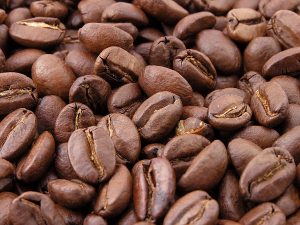Panama is home to some of the world’s best coffee, known for its complexity and distinct flavor profile. The coffee industry in Panama has a rich history that stretches back centuries and continues to play an important role in the country’s economy today. Whether you’re relocating to Panama or simply visiting here, you’ll find that coffee is more than just a daily beverage of choice. It has deep roots within Panamanian culture, regional culture, and the modern economy at large. On top of that, it’s delicious! Coffee in Panama is some of the best in the world, and if you love the aromatic, hot beverage, you’ll be more than delighted from the first sip when you try it here.
A history of coffee in Panama
Coffee first arrived in Panama during the 19th century thanks to immigrants from South America who introduced their own varieties and tastes. This early crop quickly gained popularity, leading entrepreneurs to begin investing in larger-scale production. To this day, the majority of Panamanian coffee is grown on small family farms located on hillsides throughout the country, with some plantations reaching heights of up to 6,500 feet. Almost all of these coffee-laden hillsides are found in a relatively small section of the province of Chiriqui. The towns of Volcan and Boquete are the anchors of this region, and coffee farming has been part of the local culture there since the early 20th century.
Coffee plays an important and larger historical role in Panamanian culture – particularly among rural communities where people come together over steaming cups of joe each morning as part of their daily routine. In addition to being a popular beverage, it is also used for medicinal purposes as well as religious ceremonies such as weddings and baptisms where guests share a cup blessed by priests. Economically speaking, Panama’s coffee farming and coffee exports are a significant part of the country’s GDP. The coffee industry employs thousands of people, directly and indirectly, as farmers, pickers, processors, roasters, and other coffee-related trades.
Coffee types, growing processes, and more…
The main types of coffee produced in Panama are Geisha and Typica beans – both of which grow at higher elevations and have become revered by specialty roasters around the globe due to their unique taste profiles. Geisha beans have bright, floral notes while Typica beans offer a more balanced flavor with undertones of caramelized sugar or molasses. These beans are then processed through the traditional wet-milling method which helps to preserve their flavor and aroma. Much of the best coffee that is grown in Panama is exported to other countries, but coffee lovers can still find plenty of local coffee roasters in the country.
The coffee farming process itself is steeped in tradition and age-old wisdom. It’s a labor of love for coffee farmers who handpick the cherries from coffee plants, sort them by quality, and then dry them on a special mesh tarp. This process requires a great deal of skill, attention to detail, and an understanding of the coffee plant’s life cycle. Picking coffee beans is a precise and arduous task that requires a lot of patience, skill, and hard work. Panamanian coffee farmers take great pride in the life cycle of the plants, the harvest, and the land that they cultivate. It is a job that is still largely done by hand in the traditional way, and that has tremendous value to the Panamanian people.
The economic impact of coffee in Panama
Panama’s coffee industry continues to be an integral part of its economy, contributing roughly $80 million dollars annually and providing thousands of jobs for rural communities across the country. With its rich history, high-quality product, and support within local communities, it’s no wonder why Panamanian coffee remains one of the most sought-after coffees in the world. The world’s most expensive coffee, by weight, is Panama’s Geisha coffee. With coffee-growing conditions that are unparalleled, coffee lovers have the chance to taste coffee from some of the most remote and diverse parts of Central America anywhere in the world – all without ever leaving their homes.
The coffee industry also has an impact on tourism, as coffee-curious visitors flock to coffee farms to learn more about the coffee culture and coffee-growing process. Tourists are able to experience Panama’s rich coffee heritage first-hand, while also giving back to local communities that rely on coffee farming for their livelihood. In the hills of Chiriqui, there are many coffee plantations (known locally as “fincas”) that are available for tours, and coffee lovers can learn more about the coffee trade and traditional coffee-making techniques before they taste some of the world’s best.
Today, coffee is an essential part of Panamanian culture and economy. Thanks to coffee farmers, entrepreneurs, coffee traders, and coffee lovers all over the world, coffee production in Panama is thriving and will continue to do so for many years to come. To learn more about Panama tourism, Panama’s economy, relocating to Panama, or if you’d like to retire somewhere close to the best coffee in Panama, contact us here now.
